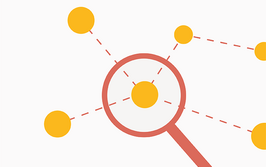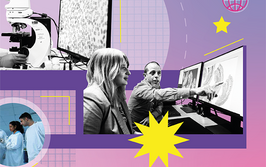Taking the “Bank” out of Biobank
Users agree that biobanks aren’t delivering – but what’s wrong, and how can it be fixed?
Dominic Allen’s article (1), “A Failed Model,” highlights some of the reasons why biobanks are failing to provide the services for which they were designed. From the other side of the table – as users of biobanks, rather than administrators – we agree on many points.
One particular area of concern for us is the number of samples sitting unused in biobanks. Patients who donate tissues for research purposes expect their samples to benefit others in the future. They would likely be unhappy to learn that their samples had not been used – or, in some cases, are even under consideration for disposal! Too many biobanks are still proud to advertise the number of biospecimens they store – but this is an inappropriate measure of how good they really are. Donors provide their samples to biobanks to be used in research, not to be stored for an indeterminate amount of time. The saying “a good biobank is an empty biobank” refers to the continual distribution of collected samples for use in research to improve healthcare. Samples that just sit in a biobank and are not used do not fulfill their purpose. Hence, the efficiency should be evaluated by ratio: the number of stored specimens relative to the number of used and shared specimens. By that measure, a good biobank would be an empty biobank.
But even the phrase “biobank” itself has pitfalls. Referring to a biorepository of samples as a “bank” conjures up the wrong image. A bank protects your assets from being stolen by others, and eventually, may even help to increase those assets. But is this really what patients want for their samples? In our view, patients deliberately donate their tissues for “the greater good.” They aren’t seeking to help only themselves, or one or two others – they want to give all scientists, public and private, the resources needed to move medical research forward.
The other problem with the “bank” concept is that such repositories should not be intended for long-term storage – a specimen’s intrinsic scientific value may decrease over time. All in all, the word “biobank” is a poor term; we recommend that those involved in biological specimen storage develop other terminology.
In his keynote address to attendees of the 2017 Global Biobank Week in Stockholm, Gregory Simon, Director of the Biden Cancer Initiative and himself a cancer survivor, suggested the term “trust.” The “bio-trust” receives the samples from the donors in trust that they will be used for the purposes to which the donors have consented. It then distributes the samples to research groups in trust that the samples will be used for the betterment of healthcare and to benefit society as a whole.
Finally, we believe that biospecimens should be accessible to and shared by all scientists, whether public or private. The biotech and pharma industries are certainly among the biggest end-users of such specimens. However, as confirmed by two recent surveys (2)(3), the respective requirements and expectations of biobanks and their industry clients are often not aligned. For instance, 89 percent of companies consider existing collections in academic biobanks to be underutilized and the biobanks themselves unable to respond to their R&D needs.
To maintain the automotive analogy of “A Failed Model,” the technology improvements applied to Formula One cars aren’t reserved only for those specialist vehicles. They help all automobile manufacturers improve the safety of today’s cars. In a similar vein, the benefits of industry biobanking aren’t just for industry users themselves; in fact, we would say that they are crucial to the ultimate goal of putting the patient first!
- D Allen, “A Failed Model”, The Pathologist, 33, 14–16 (2017). Available at: bit.ly/2x4UwMz.
- D Simeon-Dubach et al., “Survey on the perception of academic biobankers on the collaboration between academic biobanks and the biomedical industry”. Presented at the Global Biobank Week; September 13, 2017; Stockholm, Sweden.
- J Cavallo et al., “Challenges for Industry working with academic biobanks”. Presented at ISBER; April 5, 2017; Berlin, Germany.
Vanessa Tumilasci is Head of Project Management and Communications, Trans-Hit Biomarkers Inc., Laval, Canada




















